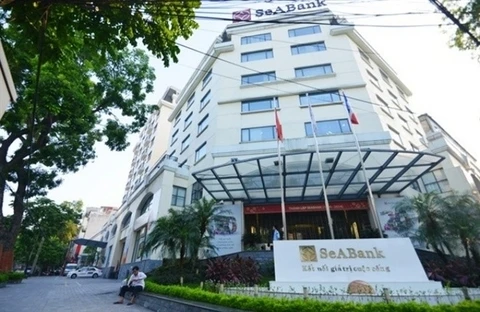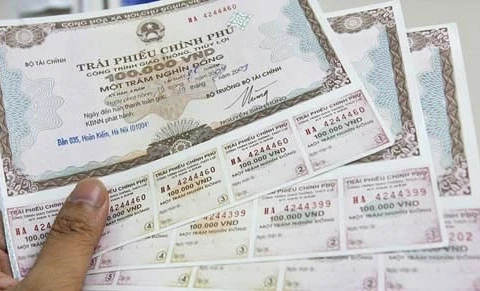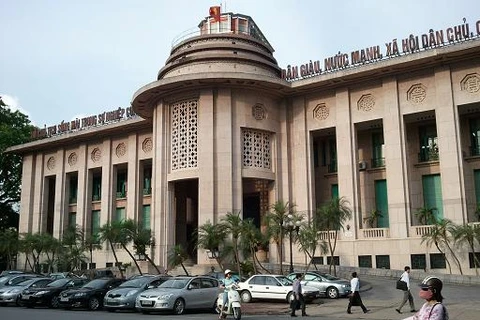Hanoi (VNA) - Experts have said that the reduction in the central bank’s interest rate will also help stabilise lending rates.
The State Bank of Vietnam (SBV) has recently decided to cut interest rate by 0.25 percent, which was described by experts as an appropriate move amid uncertainties and difficulties in the world economy. Many central banks are also cutting interest rates such as the Federal Reserve (FED) which reduced basic interest rates by 0.25 percent from 2-2.5 percent to 1.75 – 2 percent.
Appropriate move
The Bao Viet Securities Company (BVSC) said the move is in fact not too surprising when the State Bank cut treasury bill interest rate by 0.25 percent nearly two months ago.
It added that its impact will not be as great as in developed countries like the US or Europe. Vietnam’s monetary policy management directly targets the money supply through credit growth targets, M2 total payment vehicle, unlike the FED or the European Central Bank (ECB) that regulate money supply through interest rates.
According to the BVSC, the SBV’s interest rate cut mainly has orientational and psychological effects, and whether or not the monetary policy is actually loosened, it is a must to wait for the actual figures about credit growth and M2 payment vehicle in the near future.
Experts from the Saigon Securities Company (SSI) commented that the basic interest rate still exists but its role is very faint. After being used to stabilise the market in 2008, the basic interest rate has not been announced by the SBV since 2010, but reported in writing to units at a rate of 9 percent upon request.
In fact, the SBV operates mainly through interest rates in transactions with commercial banks, including rediscount interest rate, refinancing interest rate, overnight interest rate in the inter-bank electronic payment and lending rates to compensate for the capital shortage in clearing payment, open market operations (OMO) interest rates, and treasury bill interest rates, which have been adjusted down by the central bank.
Specifically, according to SSI experts, the open market between the SBV and commercial banks, and the interbank market between commercial banks are highly interconnected because they provide liquidity for commercial banks. The OMO interest rate usually ranges from the discount rate to the refinancing rate and is also the most preferred tool used by the SBV, along with treasury bills, in order to regulate inter-bank interest rates.
Also according to SSI's analysis, overnight inter-bank interest rate usually ranges from treasury bill to OMO rates under normal conditions. This is understandable because if interest rates from other commercial banks are too high, banks in need of capital will look to the OMO channel of the SBV. On the contrary, if the interbank lending interest rate drops too low, the commercial banks with surplus capital will turn to buying the SBV’s treasury bills. Because treasury bill interest rates and OMO are the tools for the SBV’s policy management, the volatility will not be as large as the market-based interbank interest rates.
“When liquidity heats up, interbank interest rates can surpass OMO rates, especially for commercial banks that used up all valuable papers to mobilise on OMO. Therefore, the more valuable papers such as bills of exchange, promissory notes, and government bonds that commercial banks hold, the more liquidity risk is reduced,” said an SSI expert.
Propelling economic growth
Commenting on the SBV's decision to reduce interest rates, Dr. Can Van Luc, member of the National Financial and Monetary Policy Advisory Council, said he is not surprised by the news, adding that it is a sound move at present.
He pointed out three main reasons, saying that amid uncertainties and difficulties in the world economy, many central banks around the world have been cutting interest rates, including FED and emerging economies. Secondly, Vietnam’s inflation is kept low at present and the entire year with eight-month consumer price index up 2.57 percent, the lowest in three years.
Thirdly, Luc said the move will keep lending rates stable, given that deposit rates have increased slightly.
Commenting on the fact that the interest rate reduction will support economic growth in the coming time, he said it is necessary to have a roadmap because when credit institutions borrow from the SBV in the form of refinancing or overnight interbank loans, only in certain cases such as having preferential credit packages provided by the SBV, they will receive refinancing loans from the SBV with slightly lower interest rates and of course, the loan amount will not be too much.
Agreeing with this policy, Dr. Nguyen Tri Hieu, a banking expert, also said the Vietnamese economy is being hit by the China – US trade war, especially in the export sector. The SBV’s interest rate reduction also helps banks reduce the cost of capital for businesses, especially export enterprises, thereby promoting economic growth.
However, Hieu said lower interest rates could hike inflation because cheap capital costs will encourage more borrowers. Accordingly, money is pushed into circulation and may cause pressure on inflation. Besides, lowering interest rates is likely to push up the exchange rate.
“In my opinion, it is necessary to cut interest rates to boost export which is now weaker than last year. If the conditions allow, the SBV could adjust interest rates to create a deeper and stronger impact on the market and the economy,” he said.
In experts’ view, under ideal conditions, cheaper capital prices in the interbank market will create a basis for commercial banks to adjust interest rates down on Market 1 (market between commercial banks, economic organisations and individuals).
“Recently, commercial banks have pushed up deposit rates quite high, thus widening the gap between deposit rates of State-owned commercial banks and major joint stock commercial banks. However, with over 70 percent of deposits and loans, State-owned commercial banks and major joint stock commercial banks play a decisive role in the common interest rate trend of Market 1,” an SSI expert said. /.

























